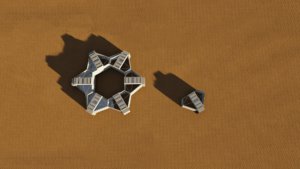CBC Radio May 26, 2018
Listen here.
The issue of malnourished crops
Thanks to a fortuitous conversation between an Israeli chemical engineer who works on medical nanotechnology and his farmer friend, there’s a new way to deliver nourishment to nutrient-starved crops.
Avi Schroeder, the chemical engineer and cancer researcher from Technion — Israel Institute of Technology asked his friend what are the major problems facing agriculture today. “He said, ‘You know Avi, one of the major issues we’re facing is that in some of the crops we try to grow, we actually have a lack of nutrients. And then we end up not growing those crops even though they’re very valuable or very important crops.'”
This problem is only going to become more acute in many regions of the world as global population approaches eight billion people.
“Feeding them with healthy food and nutritious food is becoming a major limiting factor. And … the land we can actually grow crops on are also becoming smaller and smaller in every country because people need to build houses too. So what we want is to get actually more crops per hectare.”
The way farmers currently deliver nutrients to malnourished agricultural crops is very inefficient. Much of what is added to the leaves of the plant is wasted. Most of it washes away or isn’t taken up by the plants.
If plants don’t get the nutrients they need, their leaves start to yellow, their growth becomes stunted and they don’t produce as much food as nutrient-rich crops.
The way I imagine these packets are tennis balls, but the size of each one of these tennis balls is actually 1/1,000th the width of a human hair.– Dr. Avi Schroeder, a chemical engineer at Technion
When Schroeder heard about this problem, he immediately recognized the opportunity to apply advances made in medical nanotechnology for drug delivery to agriculture.
Using medical nanotechnology for agricultural purposes
“We work primarily in the field of medicine,” says Schroeder. “What we do many times is we’ll load minuscule doses of medicine into nanoparticles — we’ll inject them into the patient. And those nanoparticles will actually be able to detect the disease site inside the body. That sounded very, very similar to the problem the farmers were actually facing — how do you get a medicine into a crop or a nutrient into a crop and get it to the right region within the crop where it’s actually necessary.”
- On a hunt for North America’s indigenous crops
- More bad news for bees from neonicotinoid pesticides
- Scientists use nanorobots to attack and kill cancer in mice
The nanoparticles Schroeder developed are tiny packages that can deliver nutrients — any nutrients — that are placed inside.

These nano-sized “tennis balls” are made of phospholipids, which are very similar to molecules that make up the cell walls in our bodies, and also those of plants. In this case, the raw materials came from soybean plants.
Schroeder tested nanoparticles containing either magnesium or iron nutrients on tomato plants grown in soil missing these nutrients. What he discovered, he says, amazed him.
“We know today, when you spray ordinary nutrients or different chemicals on plants, usually out of each 1,000 molecules that are sprayed on the plant, only one will actually penetrate deeply into the plant. Here what we found is out of each of 1,000 molecules that were sprayed, we actually had between 250 to 350 molecules that actually penetrated the plant.” – Dr. Avi Schroeder, Technion — Israel Institute of Technology.
Results of their study
“We were totally shocked when we saw the data,” says Schroeder.
“We know today, when you spray ordinary nutrients or different chemicals on plants, usually out of each 1,000 molecules that are sprayed on the plant, only one will actually penetrate deeply into the plant. Here what we found is out of each of 1,000 molecules that were sprayed, we actually had between 250 to 350 molecules that actually penetrated the plant.”
Not only did a good proportion of these nutrients make it into the plant, but the plants that received the nutrients turned from yellow to green and grew into healthy plants.
Schroeder sees this technology as a “game changer.”
With this nanotechnology, he says, “We’ll start seeing crops that grow higher, give more produce, and also more than that, the produce itself — the fruits and vegetables that will be coming out of these crops — will have a higher nutritional value because they grew in an environment where they had all the nutrients they actually needed.”










